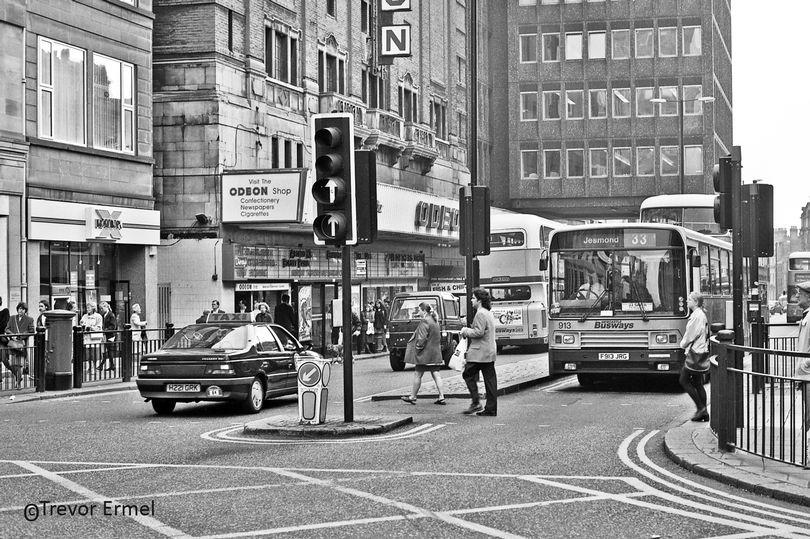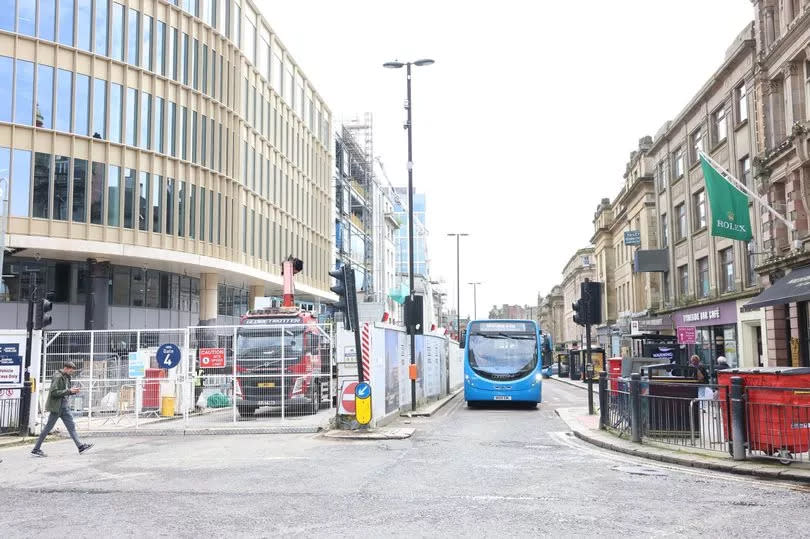Newcastle's Pilgrim Street and the Odeon cinema in 1995 - and a very different view today

For a generation of Tynesiders, this now-vanished view of Pilgrim Street in Newcastle is one that will surely be seared into the collective memory.
Central to the image, of course, is the former Odeon cinema, for decades the region’s leading picture hall, and a location countless thousands of us would flock to when the latest big film release came to town. Our image, from October 1995, was captured by photographer Trevor Ermel.
Born and bred in Gateshead, and now resident in Whitley Bay, Trevor’s stunning body of work has captured much of the changing urban landscape of Tyneside over the last six decades, and he has kindly shared many of his photographs with ChronicleLive.
While this corner of Newcastle remained relatively unchanged for many years, it is currently undergoing complete transformation in the shape of the Pilgrim’s Quarter development. The centrepiece of the project is a giant, multi-storey office block that in 2027 will become home to 9,000 HMRC staff currently based in Longbenton and Washington. It’s a far cry from the heyday of the Odeon, when the Pilgrim Street cinema was acknowledged as one of the most up-market in the country.
Originally called The Paramount, the new picture hall, complete with stylish internal and external art deco features, opened on September 7, 1931. Customers at the time were said to be amazed by the opulence of the venue. Seating well over 2,500 people, and with a design based on leading American cinemas, it attracted film-goers from across the North East.

In the early years, as well as showing movies, big-name dance bands such as Billy Cotton and Joe Loss performed at The Paramount, and there were personal appearances by stars of the day, including George Robey, Anna Neagle, Al Bowlly and George Formby. The Paramount changed its name in 1939 when it became part of the nationwide Odeon chain.
Business remained brisk over the decades, notwithstanding the unstoppable rise of television, with regular trips to the Odeon being commonplace for many of us. In 2002, however, dwindling audience numbers and changing tastes and fashions, saw the cinema close its doors for the last time. Having been a staple in the city for 71 years, it was a poignant moment and the end of an era.
The Odeon building would stand empty and forlorn for years – a crumbling shell of its former grand self as it awaited its fate, which finally arrived in 2017 when, despite much opposition, it was demolished. For a few years, the empty space was filled by The Stack - a temporary food, drink and shopping hub, made up of shipping containers.
Fast forward to 2024, and as our up-to-date photograph of the location shows, work on the transformative Pilgrim’s Quarter development is well under way. Pilgrim Street, Market Street, New Bridge Street West and John Dobson Street are all undergoing major change as the giant office block takes shape.
Further down Pilgrim Street, the old fire station will be turned into a luxury hotel, the 14-storey Bank House tower has been built on the site of the former Bank of England block, and the historic Worswick Chambers will be rebooted as a three-storey collection of bars, cafes and other units around a central plaza.

 Yahoo News
Yahoo News 
